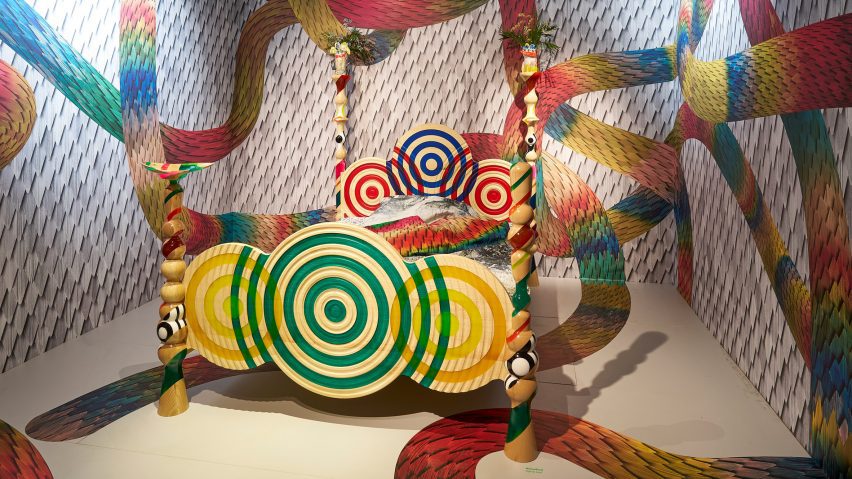
Markus Benesch designs Alpine home for fabled "tuntschi" doll
A vengeful doll from an Alpine folk tale was the imagined occupant of this colourful cabin-style home created by German designer Markus Benesch at Milan design week.
The maximalist Alpine Rising installation featured decorative Alpine-style furniture and multi-coloured wall coverings, all filled with references to life in the mountains.
Benesch developed the design after becoming fascinated by the fabled character of the "tuntschi" doll.
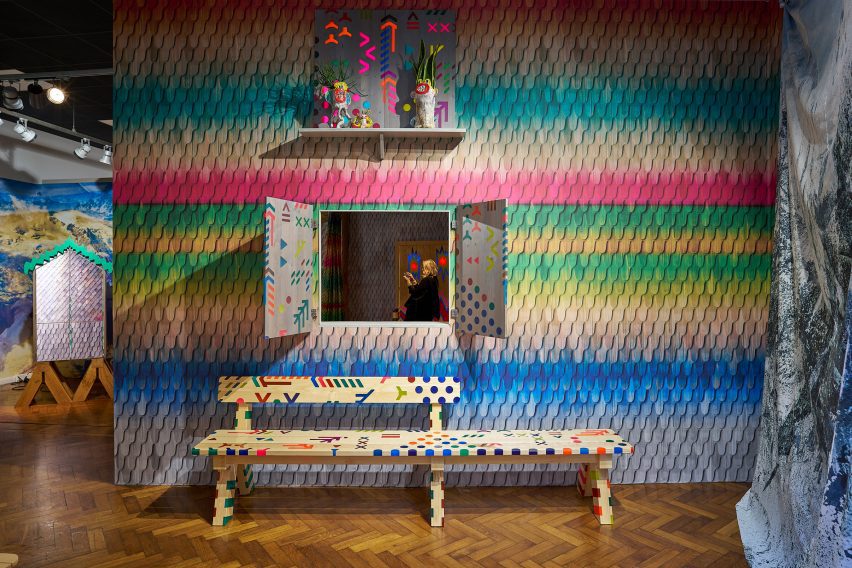
According to the story, the tuntschi is fashioned out of wood, straw and cloth by herdsmen who spend the summer tending cattle on the mountain and crave female company.
The doll comes to life, yet the herdsmen continue to objectify her. So when the time comes for them to return home, she takes murderous revenge on one of them.
This got Benesch thinking about what happens after the story finishes.
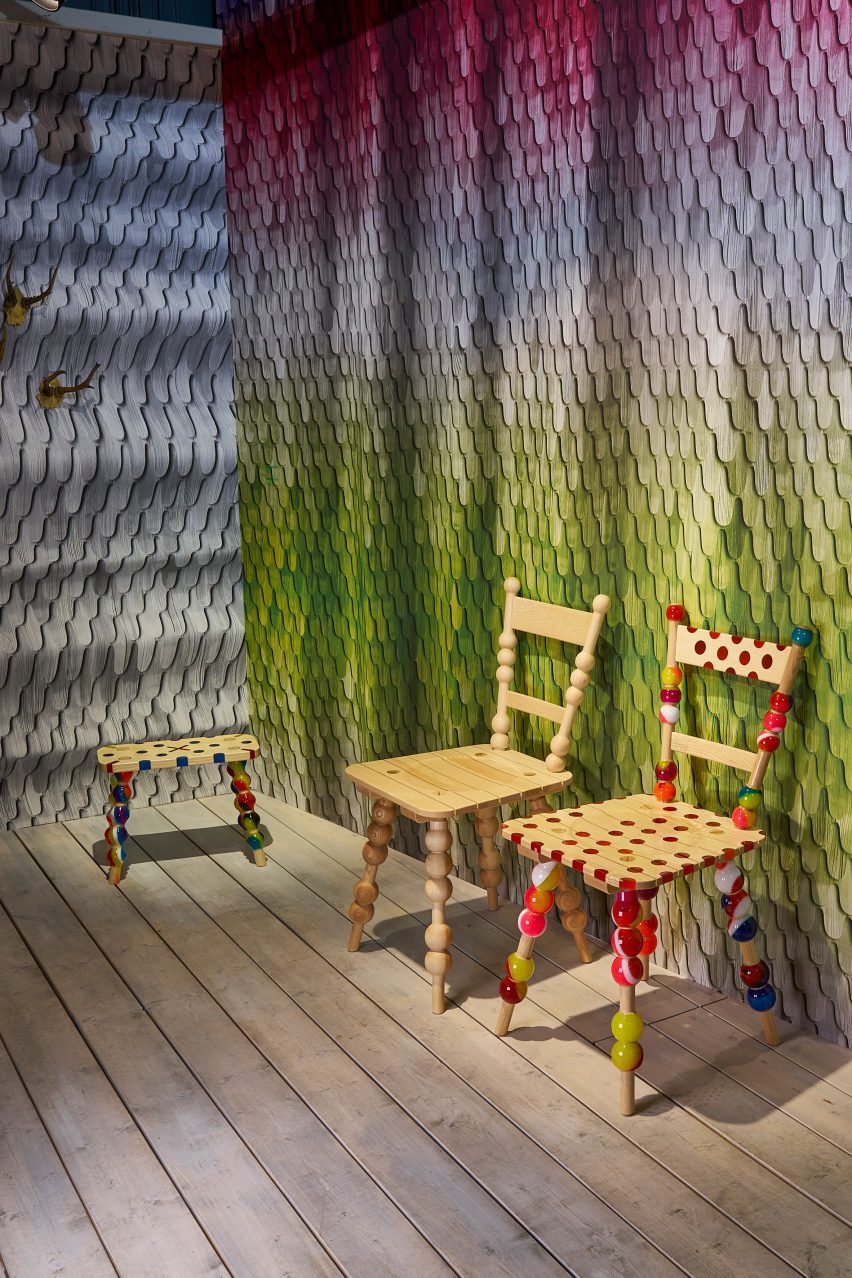
"I wondered, what is this doll doing when she is alone in the wintertime?" he told Dezeen. "I thought, maybe she has the time of her life."
One of the starting points for the design was to think about the types of pastimes that the doll might enjoy.
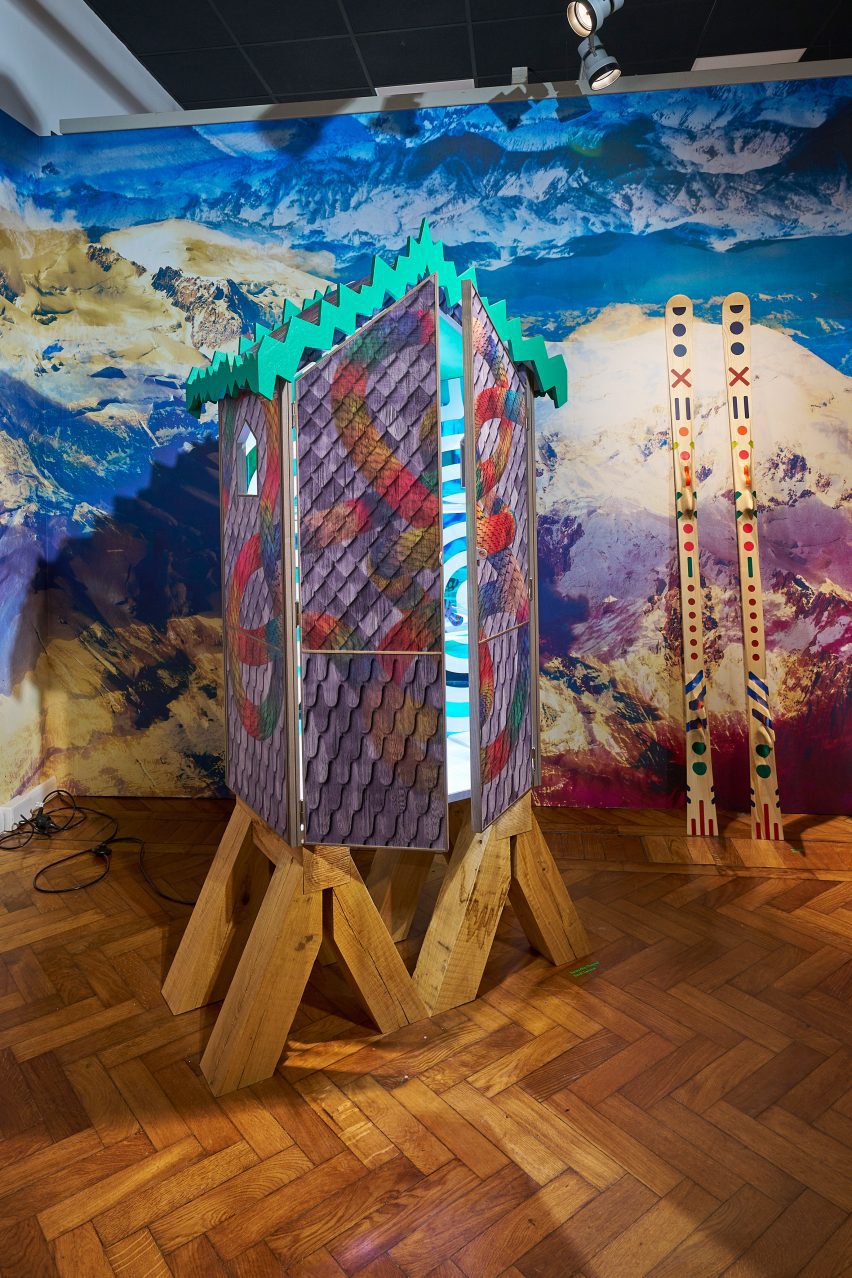
One idea was that she might ski. This resulted in swirling motifs – reminiscent of snow tracks – that appeared throughout, plus a pair of bespoke skis.
Benesch also thought the doll might take up pottery, which led him to the work of Austrian ceramicist Florian Tanzer, founder of Vienna-based studio Luma Launisch.
Tanzer's rough and enigmatic ceramics often depict unusual characters.
For Alpine Rising, he created vases and vessels that integrate the face of the tuntschi. Some pieces had more than one face, in reference to her two-faced nature.
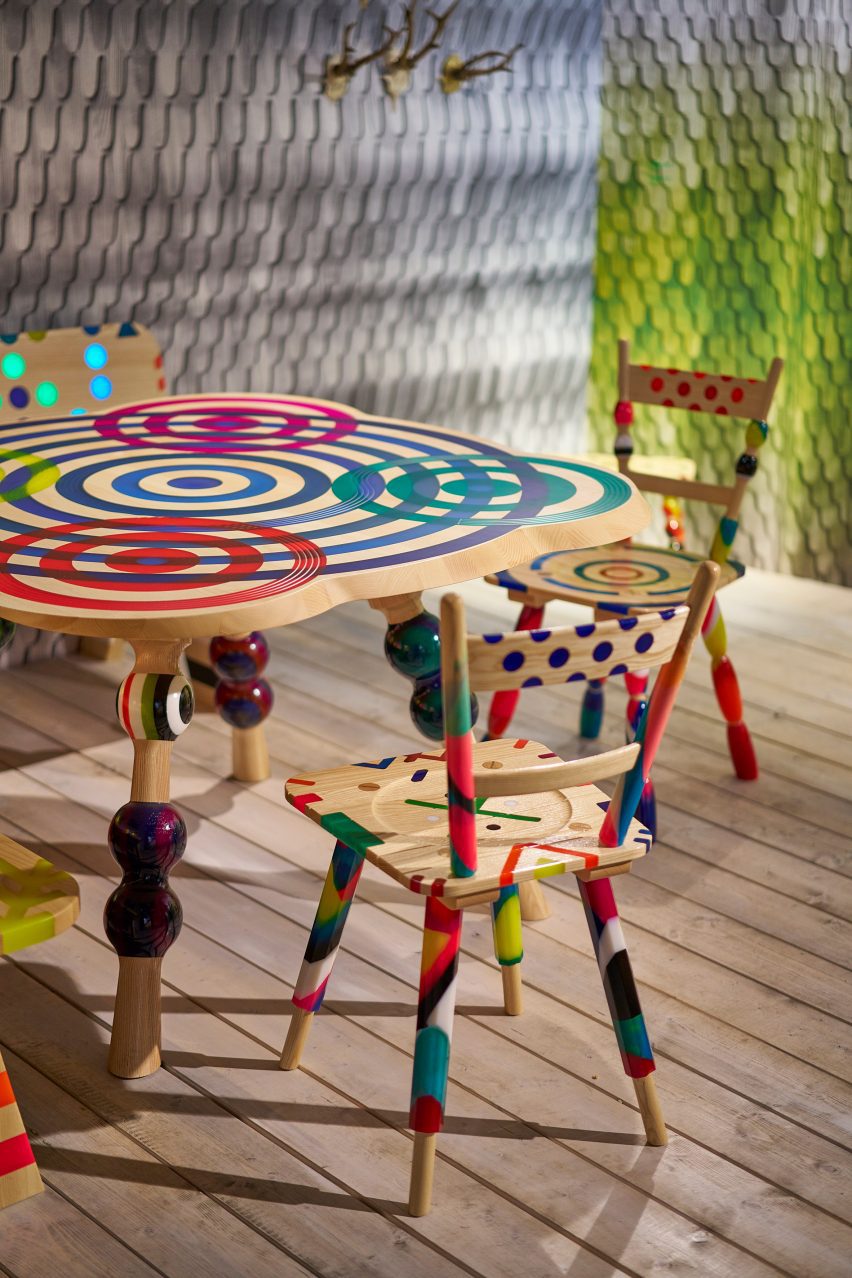
Benesch and his small-production furniture, textile and wallpaper company Curious Boy created a completely custom interior for the tuntschi's Alpine cabin.
Divided into rooms, it was filled with farmhouse-style furniture pieces that combined traditional Alpine woodcraft with colourful motifs typical of Benesch's designs.
Benesch creates these patterns by inlaying wood with pigmented resin.
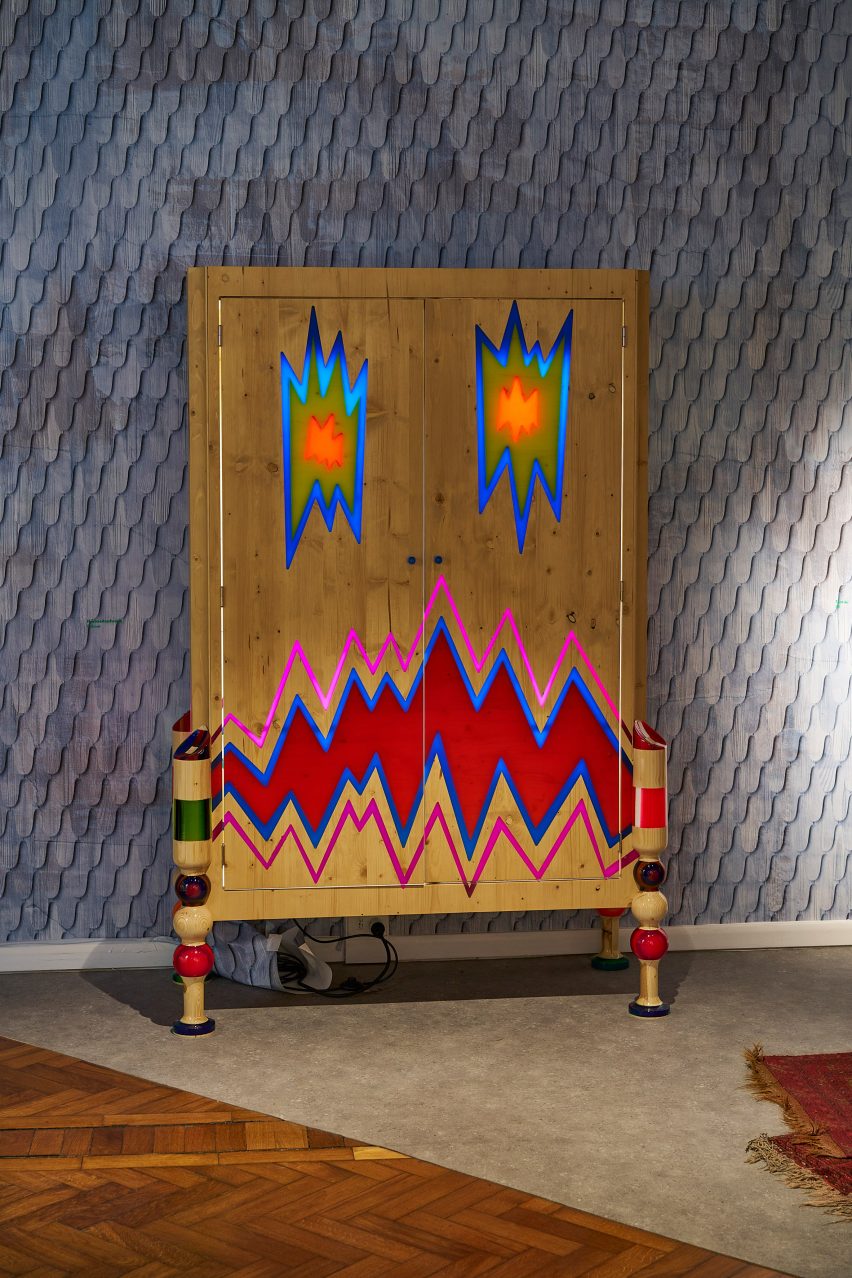
In ash wood, designs on show included the cabin-style Tuntschis cabinet, the elaborate Himmibed and the playful Stui dining chairs.
Walnut was used for the amorphous Splügen lamp, while the zigzag-patterned Hochzeitsschrank wardrobe was crafted from pine.
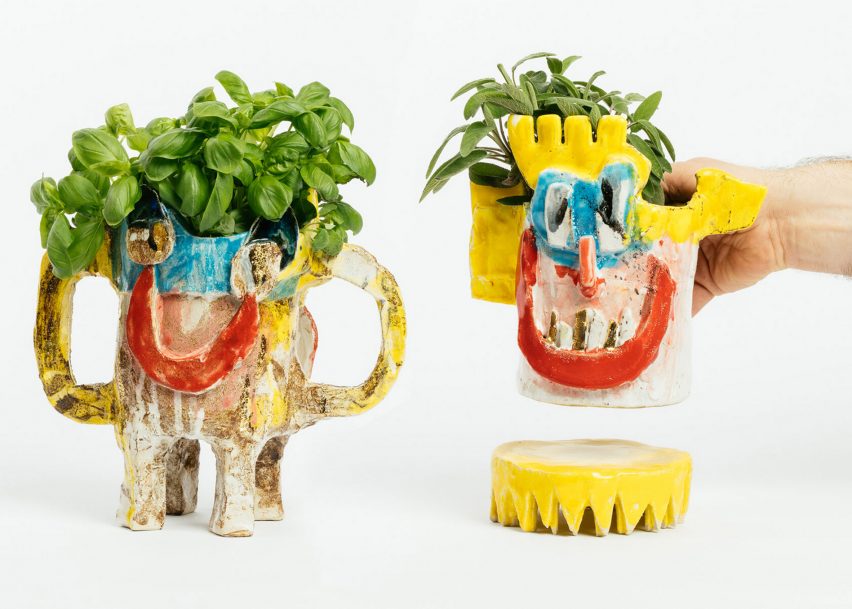
For the wallpaper and textiles, Benesch created repeating patterns using images of wooden shingles that typically clad Alpine chalets, then overlaid them with various colours and tones.
Underlying the entire design was an idea about getting away from today's digital world and the harmful effects it can have on mental health, and instead celebrating "an analogue lifestyle".
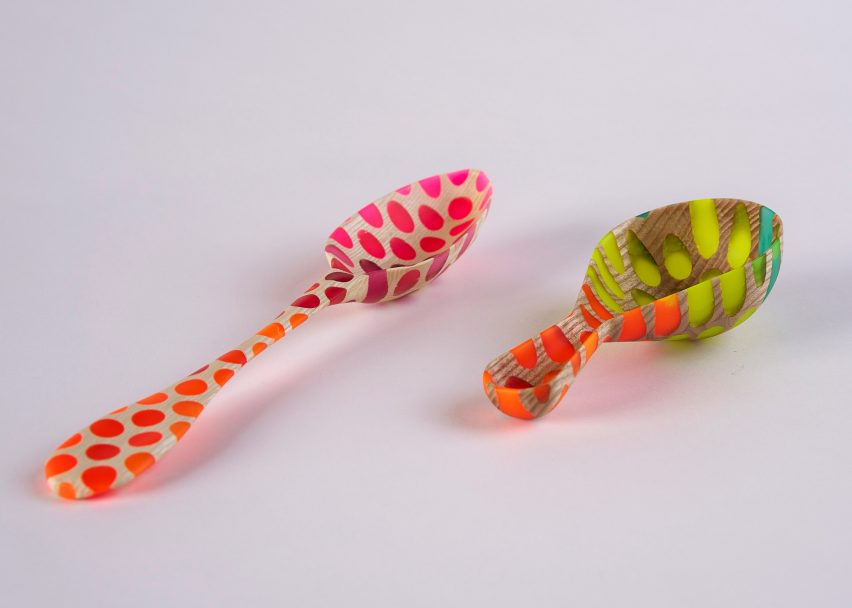
This idea was emphasised by hand-carved ash and walnut spoons and a pack of custom-designed playing cards.
"We want to disconnect from the crazy of our today's world and reconnect more with ourselves in nature," added Benesch.
The exhibition formed part of the 5Vie district during Milan design week, where other exhibitions included Artemest's L'Appartamento, a 1930s apartment redesigned by six different studios.
Following Milan design week, we collected ten standout installations and projects on show during the week.
Alpine Rising was on show from 15 to 21 April 2023 as part of Milan design week. See Dezeen Events Guide for more architecture and design events around the world.
Exhibition and furniture photography is courtesy of Markus Benesch Creates. Ceramic photography is by Gregor Hofbauer.